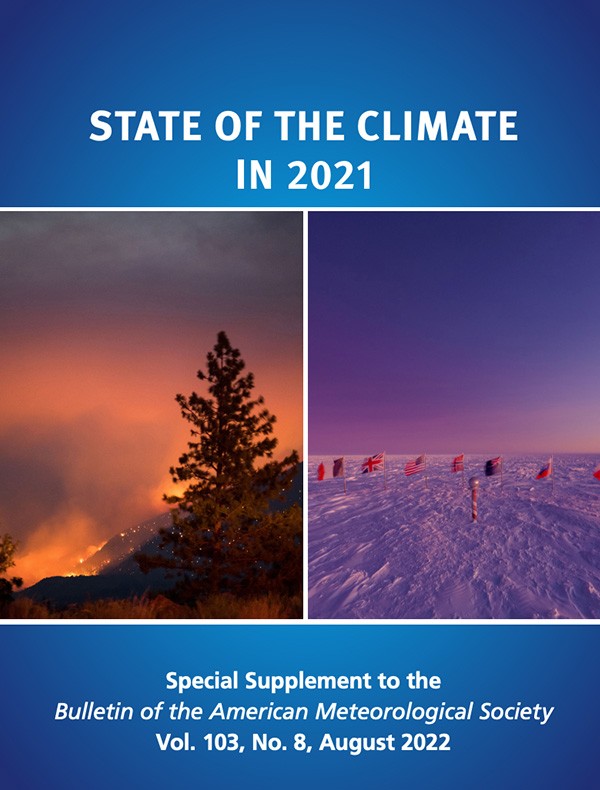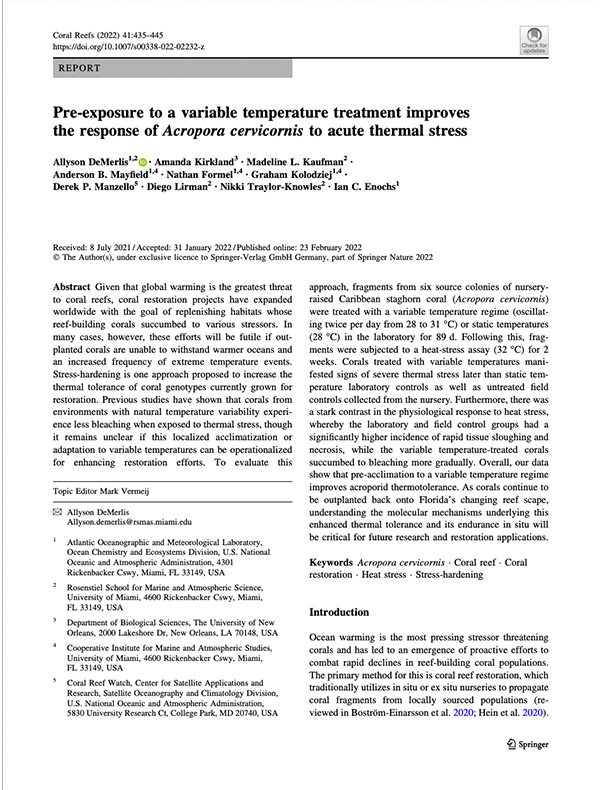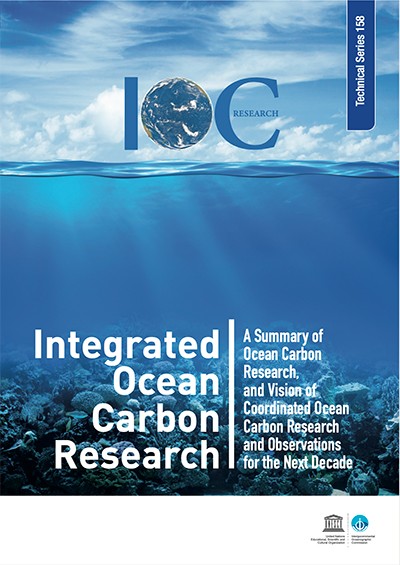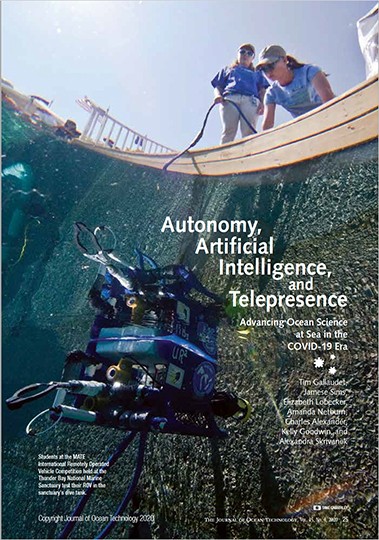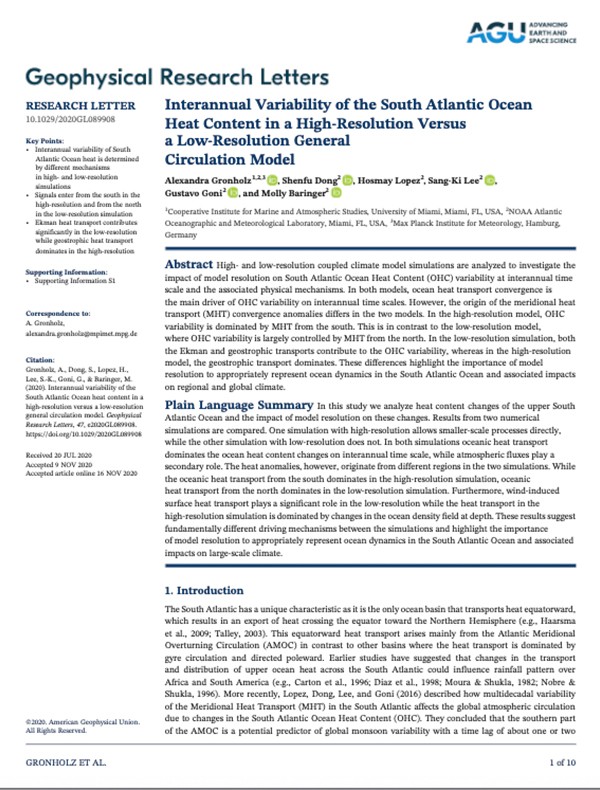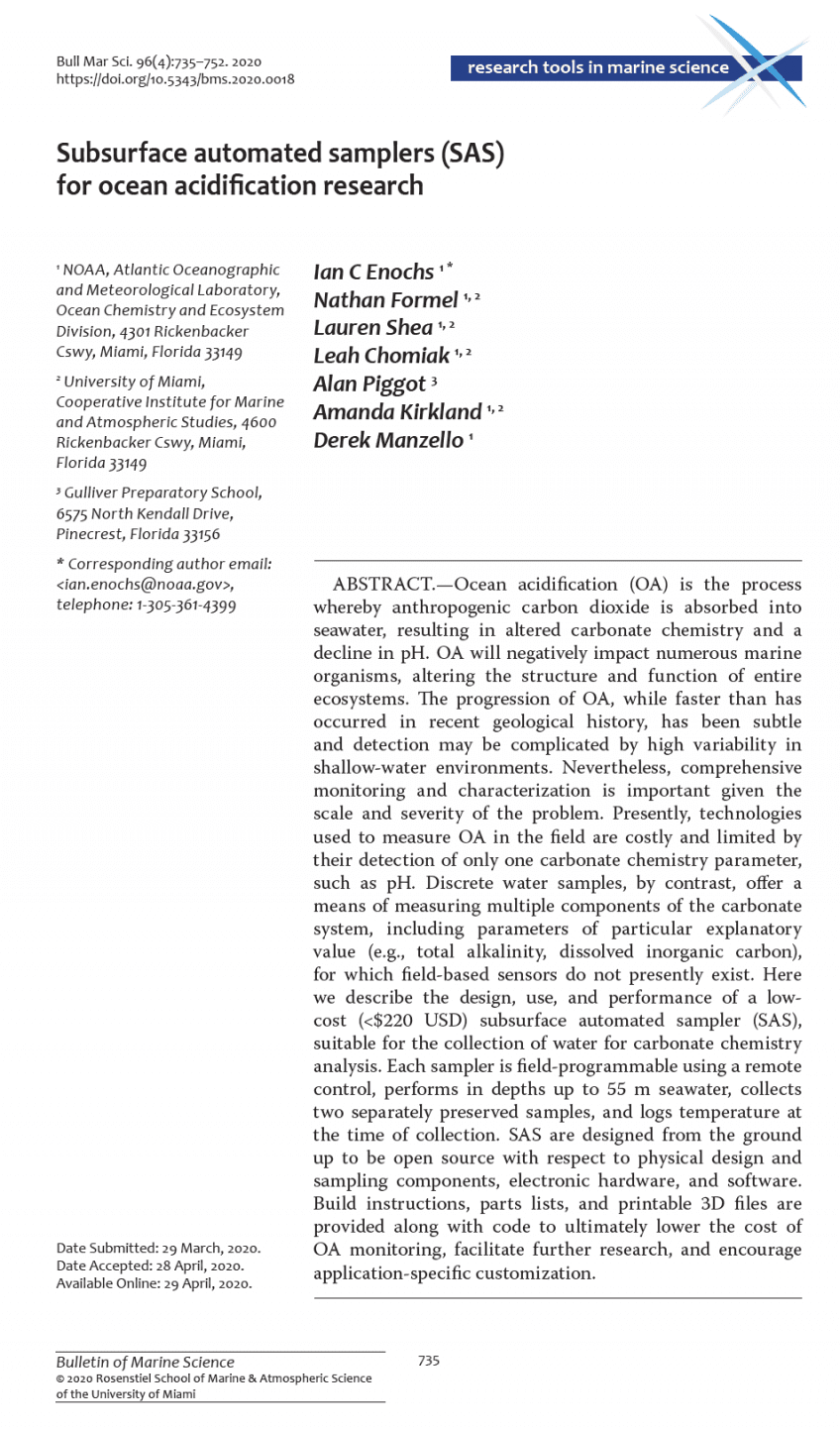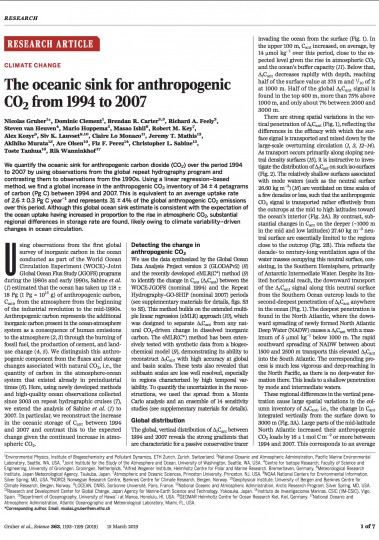State of the Climate in 2021
Blunden, J. and T. Boyer, Eds., 2022: “State of the Climate in 2021”. Bull. Amer. Meteor. Soc., 1038), Si–S465, https://doi.org/10.1175/2022BAMSStateoftheClimate.1
In 2021, the dominant greenhouse gases released into Earth’s atmosphere continued to increase. The annual global average carbon dioxide (CO2) concentration was 414.7 ± 0.1 ppm, an increase of 2.6 ± 0.1 ppm over 2020, the fifth-highest growth rate since the start of the instrumental record in 1958. This brings the concentration of CO2 to, once again, the highest in the modern record and ice core records dating back 800,000 years. The growth rate for methane (CH4) was the highest on record and the third highest for nitrous oxide (N2O), contributing to new record high atmospheric concentration levels for both gases….
Chapter 3 “Global Oceans” was co-edited by Rick Lumpkin, the Director of AOML’s Physical Oceanography Division, and Greg Johnson (NOAA). AOML authors are Francis Bringas, Shenfu Dong, Gustavo Goni, Rick Lumpkin, Renellys Perez, Claudia Schmid, Denis Volkov, and Rik Wanninkhof. Chapter 4 “Tropics” was edited by Howard Diamond (NOAA) and Carl Schreck (NC State), with AOML authors Stanley Goldenberg, Gustavo Goni, and Francis Bringas contributing to the chapter.
